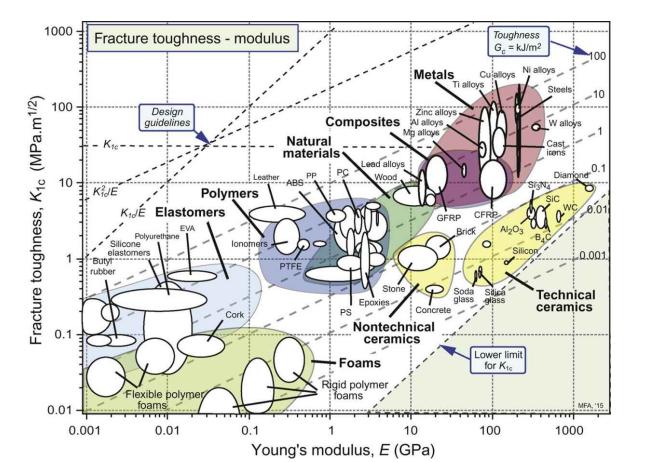The elastic deflection at fracture (the 'resilience') of an elastic-brittle solid is proportional to the failure strain,
Question:
The elastic deflection at fracture (the 'resilience') of an elastic-brittle solid is proportional to the failure strain, \(\varepsilon_{f r}=\sigma_{f r} / E\), where \(\sigma_{f r}\) is the stress that will cause a crack to propagate:
\[\sigma_{f \mathrm{r}}=\frac{K_{1 c}}{\sqrt{\pi c}}\]
Here \(K_{1 c}\) is the fracture toughness and \(c\) is the length of the longest crack the materials may contain. Thus \[\varepsilon_{f r}=\frac{1}{\sqrt{\pi c}}\left(\frac{K_{1 c}}{E}\right)\]
Materials that can deflect elastically without fracturing are therefore those with large values of \(K_{1 c} / E\). Use the \(K_{l c}-E\) chart of Fig. 3.7 to identify the class of materials with \(K_{1 c}>1 \mathrm{MPa} \mathrm{m}^{1 / 2}\) and high values of \(K_{1 c} / E\). Position the \(K_{1 c} / E\) criterion such that all metals are excluded.
Fig. 3.7

Step by Step Answer:






